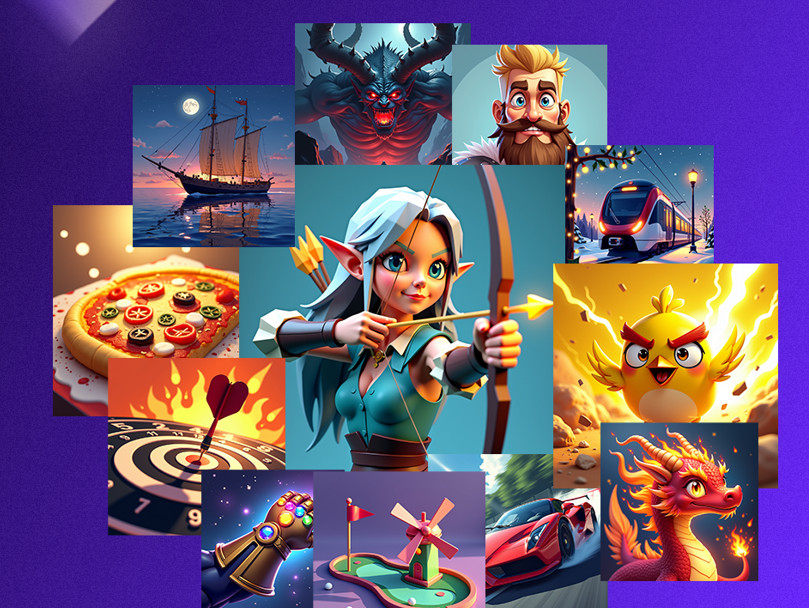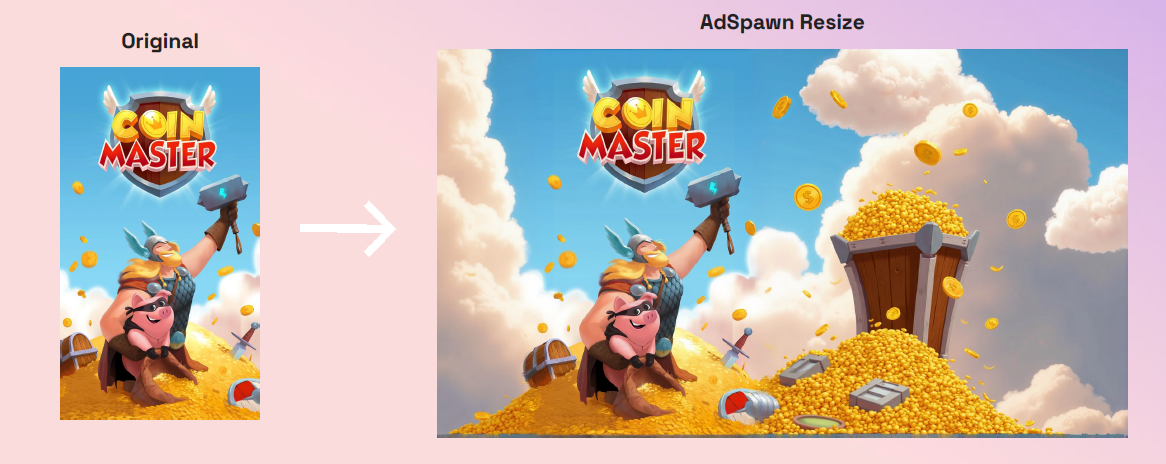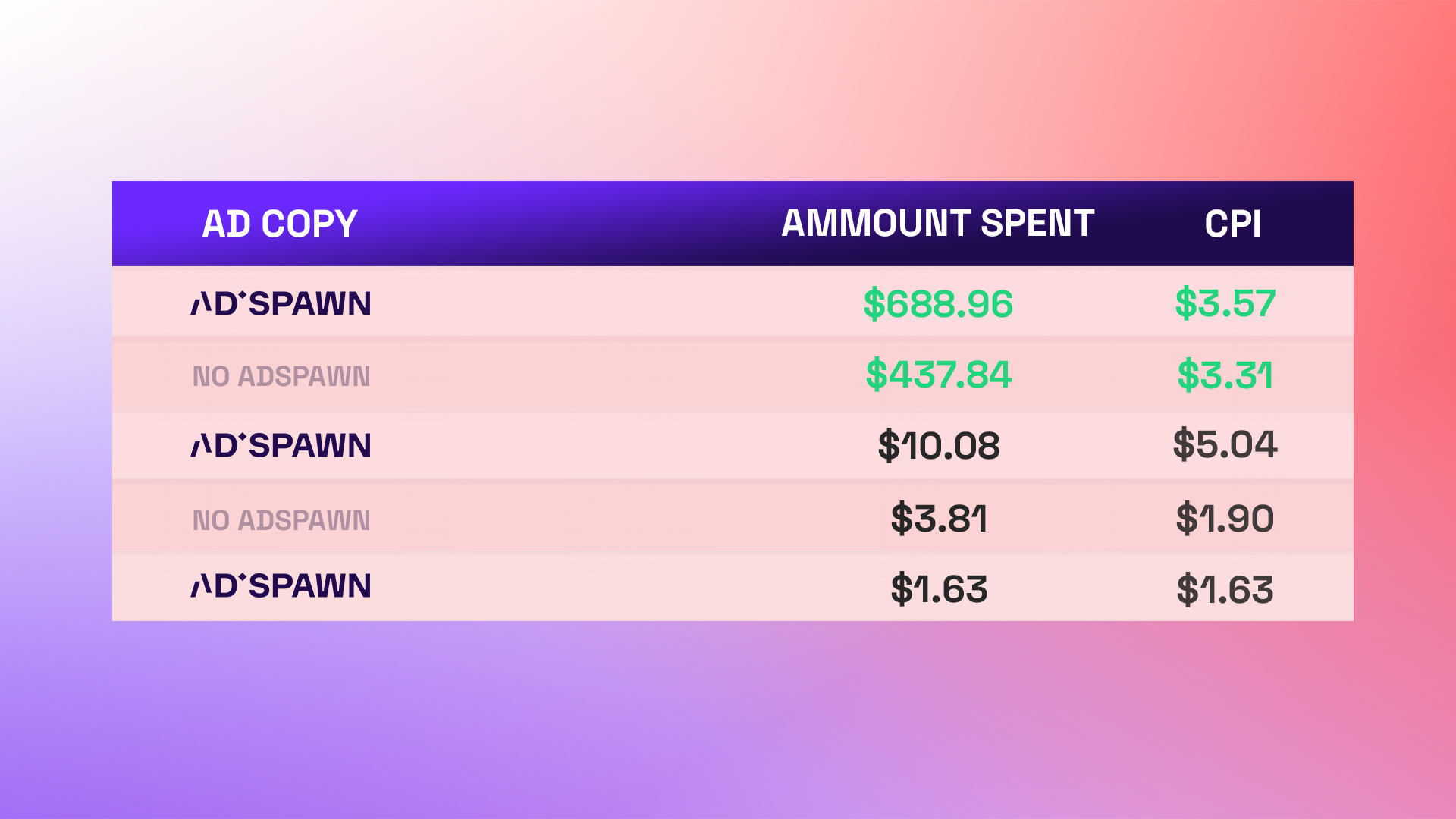Image Generation for Mobile Games Marketing
App icons, screenshots, UA images, promo art... Consistent visuals not only improve brand recognition but also enhance engagement, making them vital in the fast-paced world of mobile advertising. This article covers key strategies and tips for achieving consistent image generation for mobile game ads, ensuring that each visual piece aligns with both the game’s style and the campaign’s goals.

Establish Visual Style Guide
The foundation of consistent image generation lies in a well-defined visual style guide. A style guide defines essential elements like color schemes, character designs, and visual effects, providing a cohesive framework for designers and artists. Key components include:
Color Palette: Consistent use of colors aligns ads with the game’s branding, helping players immediately recognize the game across various platforms.
Typography: Fonts should reflect the game’s genre and target audience. For instance, sans-serif fonts work well for casual games, while ornate fonts may suit fantasy RPGs.
Design Elements: Logos, characters, and UI elements should all have standard versions across ads to avoid brand confusion.
Visual Tone: Determine whether the ads aim to be humorous, intense, dramatic, or lighthearted. Tone consistency reinforces the game’s overall vibe.
An easily accessible, comprehensive style guide streamlines production, helping designers create images quickly without compromising on quality or consistency.
Define Core Characters and Environments
In mobile game ads, characters and environments often become focal points, so consistency in their appearance is essential. From hero designs to enemy models, each character must have a set of established poses, expressions, and angles that can be reused across campaigns. This not only reinforces character identity but also minimizes the risk of inconsistencies in different ads.
For environments, prioritize certain backgrounds that resonate with players. If the game includes distinct levels, emphasize these by using similar lighting and color treatments across ads, thus creating a unified visual experience that’s familiar and appealing.

Maintain Style Consistency Across Different Ad Formats
Mobile game ads come in a variety of formats—static images, videos, playable ads, and more. Each format requires adaptation, but consistency must be maintained across all types. Here’s how to tackle format variations:
Static Images: Static ads can carry the essence of the game in a single image. Stick to core visual themes, characters, and logos to keep the images recognizable, regardless of the format they’ll be displayed in.
Videos: Since video ads are often dynamic, style consistency is especially important. Ensure characters, environments, and typography remain aligned with the overall style, and consider using similar transitions, filters, or effects.
Playable Ads: While playable ads are interactive, they should still feel like an extension of the game. Use the same assets from the game and avoid introducing new, inconsistent elements.
Use Templates and Automation Tools for Scaling
Consistency is challenging when campaigns scale up, requiring frequent image and asset generation. To handle this efficiently, consider using templates and automation tools that integrate your established style guidelines. Automation tools like Figma, Adobe Creative Cloud, and more specialized platforms offer options for generating variations while keeping core elements consistent. With a few clicks, teams can adjust background colors, character expressions, and text for different regions or platforms while staying true to the visual guide.
Another strategy is to create a bank of pre-approved templates and elements. Designers can pull from these assets to create new ads without deviating from the style guide, which speeds up production without sacrificing consistency.
Prioritize Cross-Platform Compatibility
Ads appear on multiple devices and screen sizes, which can complicate consistency efforts. Images that look good on mobile may need adjustments for social media, desktop views, or other platforms. To handle this, ensure that your visual assets are designed for responsiveness.

Optimize Aspect Ratios: Design images in multiple aspect ratios suitable for Facebook, Instagram, YouTube, and other platforms to prevent cropping or resizing issues.
Responsive Character and Object Placement: Position key elements like characters and UI in central areas to minimize distortion or visibility issues on different screen sizes.
Test on Multiple Devices: Before launching, test ads on various screens to ensure clarity and consistency. Small adjustments, like font sizes or icon positioning, can make a big difference.
Leverage AI and Machine Learning for Consistent Image Generation
Advances in AI and machine learning offer game developers a way to automate and enhance image consistency. AI-powered tools can generate new assets based on predefined styles, which reduces human error and improves turnaround time. Examples include tools for auto-generating background scenes, adjusting character details, or even A/B testing multiple variations to find the most engaging ones.
Some benefits include:
Automated Color Correction: AI tools can ensure color consistency across all assets, reducing the risk of visual discrepancies.
Context-Aware Image Adjustments: AI can assist in making content more visually consistent by recognizing elements and modifying them to fit style guidelines.
Intelligent Testing: AI-powered testing helps designers understand which elements engage users most, allowing for refinements that enhance style consistency without trial and error.
Tracking and Iterating Based on Analytics
No visual strategy is complete without performance tracking and iteration. Use analytics to determine which visuals resonate most with players and which ones may need adjustments. Insights from engagement metrics can guide future ad design decisions, helping teams refine the visual style and maintain consistency across campaigns.

Ad creatives that perform well can serve as templates for future ads, creating a cycle of consistency. Consistent image generation isn’t a one-time process but rather an ongoing effort that adapts as trends shift and new data emerges.
Final Words
Consistent image generation is vital for effective mobile game advertising. By establishing a style guide, focusing on character and environment uniformity, adapting for different ad formats, leveraging automation tools, ensuring cross-platform compatibility, integrating AI, and tracking analytics, developers and marketers can create a recognizable, compelling visual identity for their games. In the crowded mobile gaming market, a unified visual approach in ads helps games stand out, improves player recognition, and ultimately drives higher engagement and installs.



